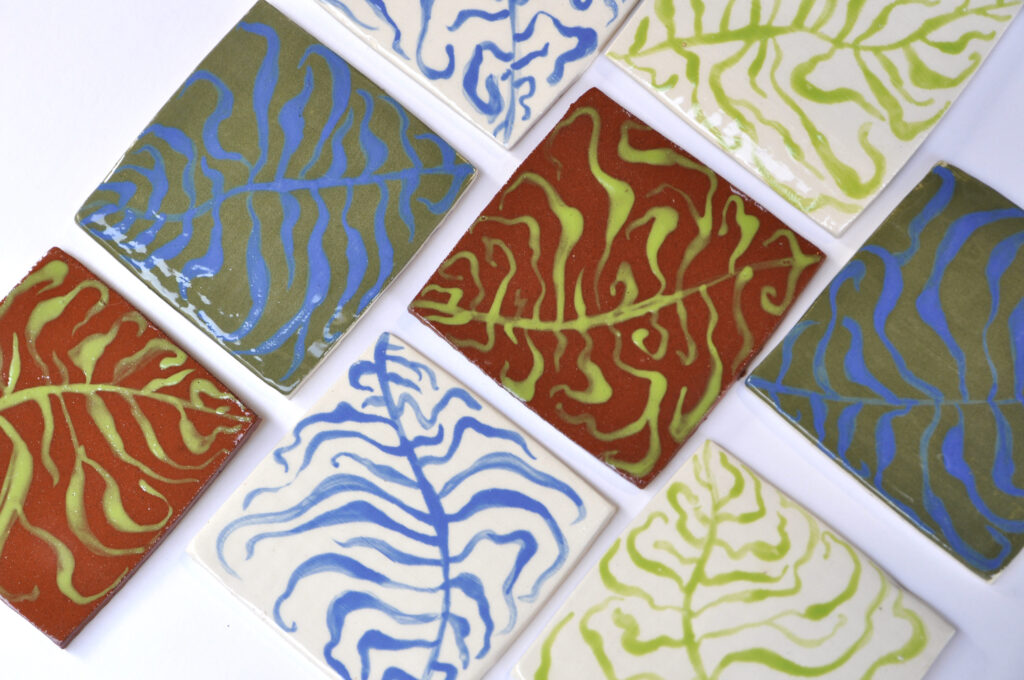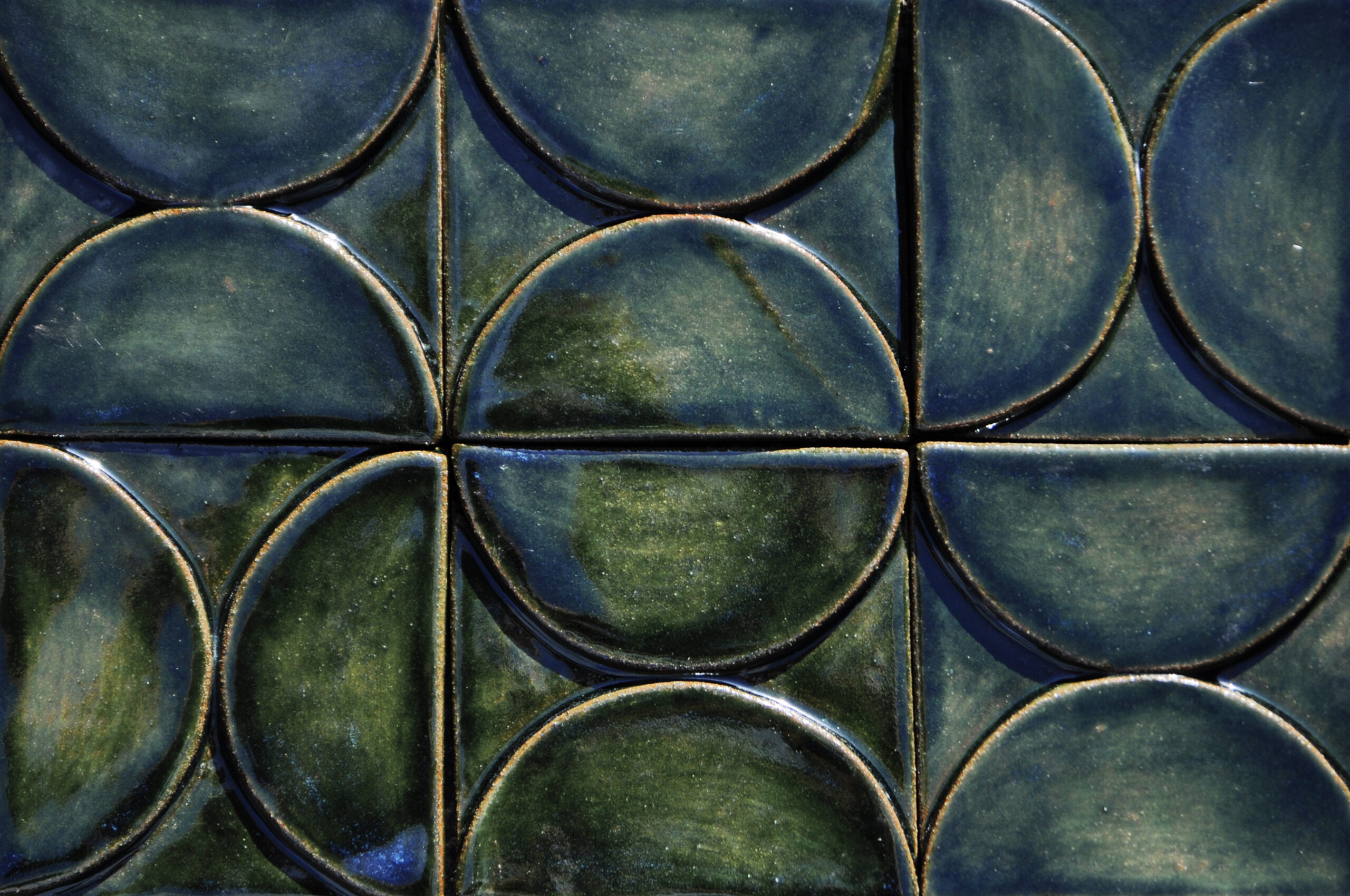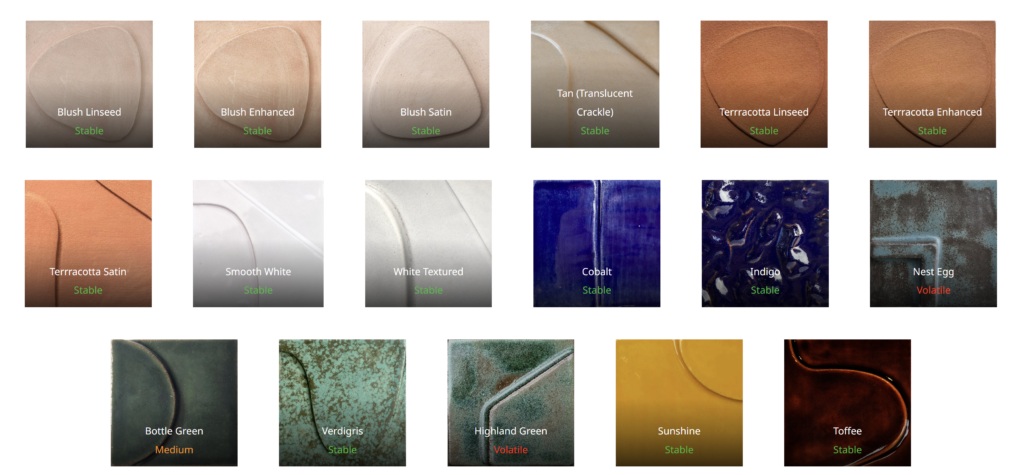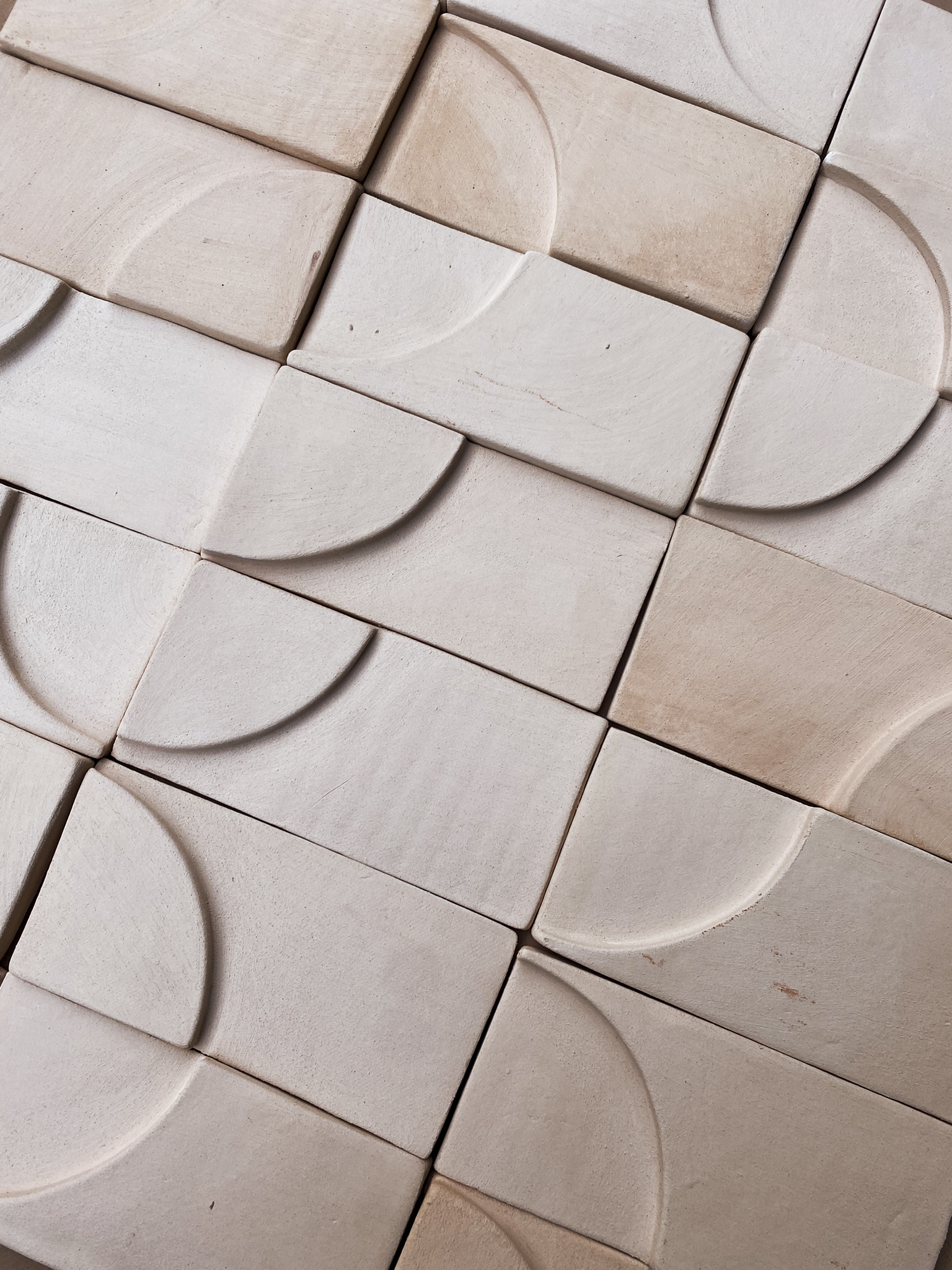At Two & 1/2 Dimensions, we are a small artisan studio dedicated to the craft of handmade ceramics tiles and we take pride in handcrafting each tile with precision and care. One of the most distinctive aspects of our process is the hand-painting of glazes onto our handmade tiles. This method, steeped in tradition and artistry, results in a visually captivating surface that stands in stark contrast to mass-produced tiles. In this article, we delve into the meticulous process of hand-painting glazes and explore why it creates a beautiful, varied surface, making our tiles more special and unique than their mass-produced counterparts.

A guide to Hand-Painted Glazes on Tiles
Hand-painting glazes onto ceramics, a centuries-old technique, is an art form in itself. At Two & 1/2 Dimensions, our skilled artisans take the time to individually hand-paint each tile with glazes, ensuring a level of detail and variation that machines simply cannot replicate. This process involves several key steps:
- 1.- Glaze Preparation: We carefully mix our glazes to achieve the desired colours and effects. Each glaze is a unique blend of minerals and pigments that react differently during firing, contributing to the variation we cherish. Each batch is mixed by hand, allowing variation throughout the glaze mixes.
- 2.- Brushwork: Our artisans use brushes to apply glazes to the surface of each tile. This hands-on approach is different from usual industrial tile making where the precision and machinery used can mean the loss of varying textures.
- 3.- Layering: To create depth and complexity, we often apply multiple layers of glaze. Because these ceramic tiles are glazed by hand, each layer interacts uniquely with the layers beneath it, creating unique patterns and hues.
- 4.- Firing: After the glazes are applied, the tiles undergo high-temperature firing in our kilns. This firing process transforms the glazes, melding them with the clay body and bringing out their vibrant colours and textures. Depending on the position of the tile in the kiln, it will be exposed to a slightly higher or lower heat (as heat rises to the top of the kiln). Even a few degrees can create subtle or sometimes drastic changes to the glaze.
The Beauty of Variation in Handmade Tiles
The hand-painting of glazes by Two & 1/2 Dimensions artisans results in a surface that is rich with variation. This variation in our handmade ceramic tiles is not a flaw but a testament to the artisan’s touch and the unpredictable nature of the glazing process.
Hand-painting glazes is an artisanal process that embraces the imperfections and nuances that make each tile unique. It is a celebration of the human touch in art and design and cannot be achieved with uniform, mass-produced tiles.
- Each tile becomes a one-of-a-kind piece of art. The interplay of colours and patterns on the surface tells a story of craftsmanship, making them more than just functional surfaces but pieces of art for your space.

Importance of Layout Before Installation
To fully appreciate and distribute the variation in our handmade tiles, it’s essential to plan the layout before installation. Each tile’s unique qualities should be strategically placed to achieve a balanced and harmonious design. Here’s why layout planning is crucial:
- Balancing Variation: By carefully arranging the tiles, you can distribute the variation across the surface, avoiding clusters of similar patterns or colours and ensuring a visually pleasing overall look.
- Customization: Layout planning allows for customization to align with your design vision. You can create patterns or gradients that highlight the variation in our tiles.
- Minimizing Surprise: Planning the layout helps reduce surprises during installation. You can anticipate how each tile will fit into the overall design, ensuring a smoother installation process. Tiles can also vary in size, read more about this on our Variations in Handcrafted Tiles: What can I expect? guide.
Colour Variation in Unglazed Tiles
While hand-painted glazes and their variation can be beautiful, it’s essential to note that even our unglazed tiles can exhibit a significant degree of variation. This variation arises from the inherent nature of clay as a natural material. Here’s why:
- Mineral Properties: Clay composition can vary even within the same batch, depending on the mineral properties of the clay. These variations can lead to differences in colour and texture in unglazed tiles.
- Firing Effects: The firing process for unglazed tiles, just like glazed tiles, can introduce variations in colour and surface texture. Changes in temperature and atmosphere inside the kiln can influence the final appearance of the tiles.
Understanding Glaze Stability

At Two & 1/2 Dimensions, we understand that not all glazes react the same way during firing. Some glazes are more stable and predictable in their outcomes, while others may exhibit greater variation. To help our customers prepare for the level of variation they can expect, we have developed a system for showing how stable our glazes are.
Our “Choosing Your Tiles” pages provide valuable information about the stability and potential variation of each glaze. We use a rating system to indicate the stability of each glaze, and we also show pictures of multiple batches to give customers a better understanding of the variation they can anticipate.
Hand-painting glazes onto our handmade tiles at Two & 1/2 Dimensions is a labor of love, resulting in a surface that is rich with variation and artistry. This variation is not a flaw but a testament to the artisan’s touch and the unpredictable nature of glazing. It creates tiles that are more than just functional surfaces; they are pieces of art that tell a story of craftsmanship and authenticity.
Whether you choose our hand-painted glazed tiles or opt for our unglazed tiles, it’s essential to embrace and plan for the variation that makes each tile special. By carefully considering the layout before installation and understanding the unique qualities of our glazes, you can fully appreciate the beauty of our handcrafted tiles in your space. For more information on our glazes and how they may vary, we invite you to explore our “Choosing Your Tiles” pages.

